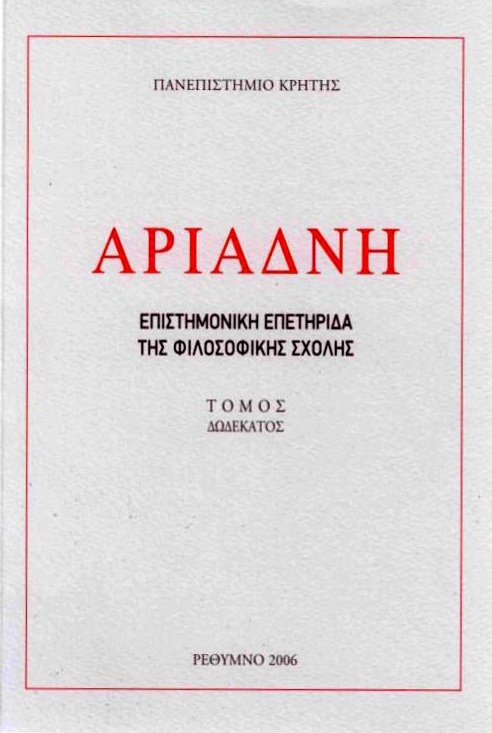Archaic moral values and political behaviour in Plato's earlier and middle dialogues and the Laws (or, from the ancient quarrel between poetry and philosophy)
DOI:
https://doi.org/10.26248/ariadne.v12i0.960Abstract
Ιn this paper basic terms such as agathos, arete and dikaiosyne are traced in Plato's earlier and middle dialogues (Protagoras, Meno, Republic) and the Laws. It is examined whether moral values and political behaviour of the Archaic period are valid in Plato's dialogues or not, and if they are transformed and in what way. Methodologically, the analysis deploys the basic distinction between co-operative (or quiet) values (or excellences) and competitive values (or excellences) , drawn originally by Α. W Η. Adkins. It is acknowledged that Plato's chief problem in ethics is the problem which has existed in the Greek value system from Homer onwards, namely that of affixing dikaiosyne, and the quiet virtues generally, to the group of values based οn arete so firmly as to make future severance impossible.
Ιn the dialogues mentioned above the paper draws attention to unnoticed Homeric or lyric passages which are transformed in the Platonic context, so as to function within the frame of co-operative values. Ιη this way it can be better appreciated how co-operative values manage to come into their own in the Platonic corpus, since the lack of them causes the ruin of the states.
Ιn an annexe demioergos and techne are examined οn the basis of the discussion in Meno and the Republic primarily. It is suggested that by classifying himself to the craft of the demioergoi, Plato manages to use the craft analogy in his theory of virtue. It is also argued that the craft analogy can be found and consistently traced in the Platonic works and it proves essential to the understanding of Plato's inature moral theory. Plato's theory of virtue is through the craft analogy.
Downloads
Published
How to Cite
Issue
Section
License
Authors retain copyright and grant the journal right of first publication with the work simultaneously licensed under a Creative Commons Attribution-NonCommercial-ShareAlike 4.0 International License that allows others free use of the work for non-commercial purposes as long as the author/s and the journal are attributed properly and the new creations are licensed under identical terms (Creative Commons Attribution-NonCommercial-ShareAlike 4.0 International License).


